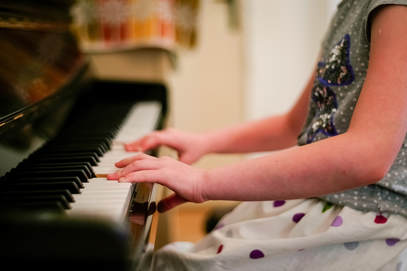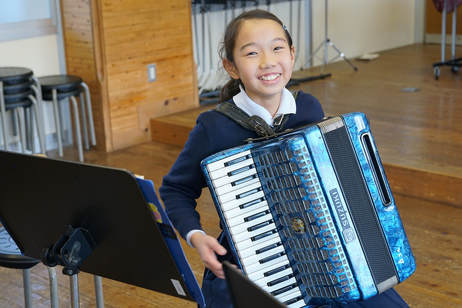|
There are a number of methods and sets of practices, some generations-old, for teaching the techniques - and the enjoyment - of music to children. Here are brief summaries of four of the best-known and most widely used of these methods throughout much of the world. 1. The Kodály Method In 2016, the United Nations Educational, Scientific and Cultural Organization placed the music teaching method devised by 20th-century Hungarian composer and musicologist Zoltán Kodály on its UNESCO World Heritage List. The method’s ability to help preserve traditional folk music and make it easier to learn earned it a place on the list of Intangible Cultural Heritage practices. This experience-based teaching method is comprehensive in its teaching of how to read and write music as part of a basic musical curriculum. Singing, folk songs, and solfège - training the ear to understand pitch and pattern - are all central components of the curriculum. Kodály believed that learning to express oneself through singing the songs of one’s native land should be a foundation stone of a child’s musical education. The Kodály Method begins with helping children develop a sense of rhythm, and with teaching sight-reading and basic pitch through a series of hand signals that assist in demonstrating the relationships between musical notes. Kodály, a collaborator with his fellow Hungarian composer Béla Bartók, gathered and published major collections of Hungarian folk songs. He was an important figure in the spread of music education throughout Hungary. His method puts such strong emphasis on folk songs because he believed the genre possesses every quality necessary for inculcating a deep love of music in each child. 2. The Suzuki MethodThe Suzuki Talent Education Method starts music training early, with teachers striving to ensure that children learn mental focus and fine muscle control when they are young enough to make these skills an integral part of their personalities. This method involves parents in their children’s music education as co-educators and co-learners. Parents may learn to play an instrument before their child does, and they serve as reinforcing influences in the home for the lessons provided by the classroom teacher. The Suzuki Method concentrates on teaching music the same way that children acquire language: through listening and repeating. Every day, a Suzuki student listens to recordings of the same piece of music he or she is engaged in learning. Regular review allows students to incorporate new techniques into material already mastered. Reading music waits until the student has begun to master actually playing an instrument. The method’s inventor, Japanese violinist Dr. Shinichi Suzuki, based his method on the way children naturally acquire spoken language, calling his program a “mother tongue” approach. He emphasized the joy involved when children, parents, and teachers participate in studying music together. He was less concerned with training professional musicians than he was with enriching children’s lives so that their natural sensitivity and awareness of the world around them would blossom. 3. The Orff Method In the Orff Method, a child learns music through movement, singing, and acting out musically-themed stories. Students may use xylophones, drums, maracas, tone blocks, and numerous other percussion instruments to practice melodies within a learning framework that emphasizes the importance of play and fun. Teachers also encourage their students to compose their own pieces of music, and to practice improvising already-known pieces. Student improvisation is, in fact, one of the cornerstones of this method, as children have the chance to follow their own creative ideas during lessons. The Orff Method is known in the original German as Orff-Schulwerk (Orff Schoolwork), and also called simply “Music for Children.” The 20th-century composer Carl Orff is today best known for his 1937 oratorio Carmina Burana, a work that exemplifies his passion for strong rhythm and movement. He also assisted the gymnast Dorothee Günther in establishing a school focused on music, gymnastic training, and dance. During his time working with the school in the 1920s and 1930s, he came up with the ideas that would form the basis for his own musical education system. His book, entitled Orff-Schulwerk, which appeared in English translation as Music for Children, is based on the lessons he devised in collaboration with Gunild Keetman, a former student at the Günther school. The method is now taught in dozens of countries and is the subject of increasing interest around the world. Teachers using the Orff system create their own lessons based on the needs of their individual students. A typical lesson might begin with a teacher reading a poem aloud to the class, followed by students acting out a short drama based on the poem. The students then repeat the poem, this time adding sound by accompanying the story with musical instruments. 4. Dalkroze EurythmicsDalkroze Eurythmics is a music instruction method anchored in using ear-training, movement exercises, and improvisation to awaken and develop a child’s inborn gift for music and rhythm.
Created by Emile Jacques-Dalcroze, a 20th-century composer and professor of harmony in Geneva, Switzerland, the method is centered on its author’s tenet that rhythm-based, ear-training process cements musical concepts into a student’s muscle memory. This increases musical proficiency and builds a deep understanding of the physical demands on the musician. Dalcroze believed that students learn best through engagement of multiple senses, and that in order to gain a true understanding of his method, it is necessary to actually experience it. Dalcroze designed his method to teach music on a deep level, building an understanding of how it works to express a range of meaning and emotion, as well as how it relates to other arts and to the daily life of human beings. His work has been influential in the development of the performing arts and art therapy. Comments are closed.
|
Photo used under Creative Commons from Marina K Caprara
 RSS Feed
RSS Feed
